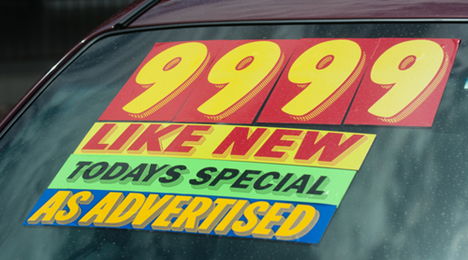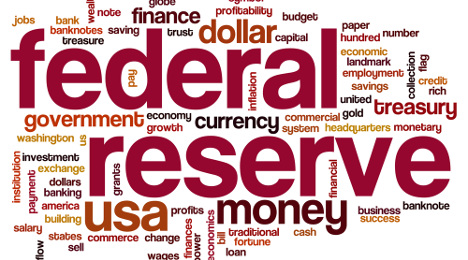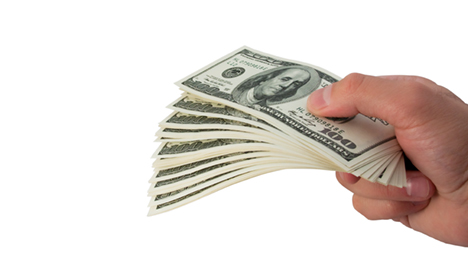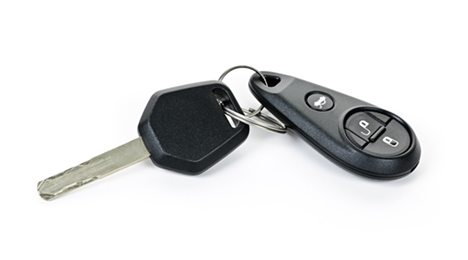Tom Folliard didn’t mince words.
“The first quarter of FY17 was a challenging one for us,” the CarMax chief executive officer said during a conference call Tuesday discussing the company’s first quarter earnings report.
Total revenues increased by 2.8 percent, he said, while used unit comps were slightly positive — up 0.2 percent — and total used units grew 4 percent. Comp units were driven by an improvement in conversion, Folliard said, which offset a modest decrease in store traffic.
Folliard said he believed that decline in traffic is both “predominantly and disproportionately a result in decrease of Tier 3 sales.” (Tier 3 consumers are those who credit score falls between 620 and 659.)
Chief financial officer Tom Reedy noted a continuing downward trend in applications by consumers at the lower end of the credit spectrum. He said that Tier 3 financing as a percent of sales declined to 11.9 percent compared to the first quarter of last year, which he attributed this to lower applicant volume and credit tightening by third-party vendors.
President Bill Nash noted that as a percentage of sales mix this quarter, vehicles zero to 4 years old remained essentially flat compared to last year at approximately 77 percent. Midsize and large SUVs and trucks as a percentage of sales increased by more than 2 percent to approximately 25 percent in this first quarter compared to last year’s first quarter and remained flat compared to the fourth quarter.
Nash said two stores were opened during the first quarter, in Springfield, Ill., and in San Francisco. Subsequent to the end of the quarter, CarMax opened a store in El Paso, Texas.
He said the company plans to open an additional 13 stores in FY17. Two of those will be in the second quarter: one in Bristol, Tenn., a new market for CarMax, and one in Boston, which will be the company’s third store in that area.
Nash highlighted that the company unveiled a new website in April.
“It combines an upgraded and enhanced design with a seamless experience across all devices. We have also upgraded the entire site to a state-of-the-art technology platform,” he said. “This will allow us to more quickly innovate, test new capabilities and personalize the experience based on the customer’s individual preferences.”
CarMax is also testing an online financing protocol in 10 of its stores.
“We’ll have sales consultants involved in the process,” Nash said. “We’ll contact a customer of they are declined.”
A call participant asked if CarMax foresees a time when store count might not be growing as much, but the company is reaching more customers online.
“We think that to be successful you need to have a really good presence in both,” Folliard said.
“Consumers are being much more informed before they come into the store. So they are doing a lot of research up front. We know nine out of 10 of our consumers who buy from us do some homework ahead of time on carmax.com,” he continued. “We are going to be focused both on traffic, both in-store traffic to the web and then equally focused on conversion.”
Another participant asked if CarMax feels the need to add Tier 3 finance companies given that Tier 3 activity is down.
Another call participant asked whether CarMax sees a need to add financing options or take on additional originations in the Tier 3 space.
“As far as looking at our Tier 3 lenders, we will do that from time to time. We test lenders when it makes sense,” Folliard said.
“As far as Tier 3, I would characterize it as steady as she goes.”
With rising off-lease vehicle volume being described as a “tailwind,” the April dealer survey conducted by KeyBanc Capital Markets indicated that 71 percent of respondents posted an increase in used-vehicle sales during the month. But not only did the remaining 29 percent of dealers surveyed sustain a drop in used turns, it might have been to a degree that might have triggered a department staff meeting.
All 29 percent of the stores that experienced softening monthly sales had a decrease of at least 10 percent, according to the survey results shared with Auto Remarketing on Monday.
The largest segment of dealers who said they had a used-sales increase in April generated a lift below 5 percent. That group consisted of 43 percent of that cluster.
The remaining 28 percent of participants who enjoyed used-sales upticks were evenly split between stores that had increases between 5 percent and 10 percent or jumps of more than 10 percent.
Mentioning a source of used inventory — especially certified pre-owned units — KeyBanc analysts projected that annual lease expirations are expected to increase to about 3.9 million vehicles in 2018, up from 2.5 million off-lease units the industry experienced in 2015.
“That is a 56-percent increase over the next three years,” KeyBanc said. “Increasing lease expirations should remain a tailwind to new and used vehicle sales.”
Analysts added “80 percent of returning lessees will lease another new vehicle. About 8 million units of estimated pent-up new vehicle demand should remain a tailwind to new vehicle sales for a few years to come.”
And speaking of new-vehicle sales, KeyBanc mentioned that the April and May new-model seasonally adjusted annual sales rate rebounded to 17.3 million in April and 17.5 million in May as the firm projected.
KeyBanc closed by cautioning how trends it is seeing could pit departments at franchised dealerships against each other when analysts touched on the volume of leases rolling over the curb.
“This positive driver of new vehicle sales will be partially offset by the lower used-vehicle prices as a result of an increase of late-model used vehicles in the marketplace,” KeyBanc said. “Lower trade-in values will result in slightly higher monthly payments of about $25/month on average for a lease and about $15 on average on a financed purchased, based on our estimates.
“Additionally, lower used vehicle prices will cause some potential new vehicle buyers to move into the late model used-vehicle market,” the firm went on to say.
With 10 of the 12 Federal Reserve districts discussing new- and used-vehicle sales activity, the latest Beige Book highlighted that metal rolling over the curb generally was steady in April and May. On Wednesday, the Fed reported through its district-by-district rundown that looking at overall sales, truck and large vehicle turns outpaced car sales across many districts.
The Cleveland district was one of the shining stars from the latest reporting period as sales grew 1 percent over a year ago, with light trucks and SUVs dominating purchases. Truck purchases were strong in the Richmond district, too.
Still, pockets of the country suffered some sales softening, especially the Philadelphia, Atlanta and Kansas City districts.
Looking long term, Fed dealer contacts in the Philadelphia, St. Louis and Dallas districts reported an optimistic outlook for annual auto sales in 2016, due mostly to low gas prices.
Here are additional particulars from the 10 Federal Reserve districts that mentioned sales in more detail as a part of the latest Beige Book:
New York
The Fed noted that new-vehicle sales in upstate New York are reported to be steady at a fairly high level in April, though there were scattered signs of softening in early May.
“Inventories of new vehicles are reported to be somewhat on the high side for this time of year,” officials reported.
Meanwhile, the Fed determined sales of used vehicles were also described as steady in April with some signs of a pickup in May.
“While credit conditions generally remain in good shape, one contact notes some tightening at the low end,” the Beige Book said.
Philadelphia
Overall, Third District dealers reported that light vehicle sales have slowed somewhat during the current period.
“Some dealers suggested that early May sales appeared to be coming back,” the Fed said. “Others expressed concerns that sales have begun to slow from recent peaks.
“Dealers mentioned that lack of inventory, aggravated by high recall levels, has constrained supply,” the report continued.
The Beige Book also mentioned that “record” numbers of off-lease vehicles coming back to the used-vehicle market has lowered demand for new-car sales.
“Dealers hope that total 2016 sales may still eclipse 2015, in part, due to greater use of manufacturers' incentives,” the Fed said.
Cleveland
As mentioned previously, the Fed found that year-to-date sales through April of new vehicles rose 1 percent district-wide compared to those of a year ago. Purchases of light trucks and SUVs continue to dominate the market.
For luxury brands, the report indicated weakening demand that began early in 2016 continued into April.
“Although new-vehicle sales are expected to remain stable at high levels this year, dealers reported that fleet sales are rising, while retail transactions have flat lined or declined,” officials said.
“Transaction prices were stable during the past couple of months, and leasing remains very popular. Dealer payrolls increased along seasonal trends,” they added.
Richmond
The Beige Book said vehicle sales remained fairly strong but have started to slow, according to dealers and an industry expert, while motorcycle sales were sluggish.
Officials added that retail prices rose slightly faster, although increases were moderate overall.
Atlanta
Dealers told the Fed that sales of light trucks and larger vehicles had softened slightly from previously high levels.
“The outlook among district merchants remains generally optimistic,” the Fed said.
Chicago
The Fed found that sales of new and used vehicles remained “robust” and “strengthened further” in recent weeks, helped by “more generous” incentives.
Dealers also noted that leasing activity was especially strong. The Fed added that average overall transaction prices moved higher as the vehicle mix continued to shift toward larger, more expensive vehicles, and because of greater demand for high-tech options.
St. Louis
The Fed shared that reports from dealers were mainly positive. Most dealers noted sales were in line with 2015 levels, and several Memphis used-vehicle dealers reported record sales for the month.
Multiple dealers also noted a shift in demand toward more high-end vehicles.
“Contacts continued to report the beneficial impact of low gasoline prices and low interest rates,” the Fed said.
Minneapolis
The Fed highlighted that a dealership in central South Dakota reported that sales over the last quarter were up 60 percent since this time last year while its used-vehicle sales have nearly doubled.
Kansas City
Officials found that vehicle sales continued to decline at a “moderate” pace and remained below year-ago levels, although dealer contacts expected a “modest” pickup in sales for the months ahead.
The Fed also noted that vehicle inventories decreased but were expected to rise slightly in coming months.
Dallas
The Beige Book indicated sales held fairly steady at “very high” levels and were up slightly from year-ago levels.
“However, a few contacts noted that the contraction in the energy sector was affecting sales,” the Fed said.
Officials added that trucks and SUVs were outselling cars. Inventories were generally at desired levels, although one dealer mentioned they were a little short on trucks.
“Contacts expect good sales volumes in the upcoming quarter but for margins to remain under pressure,” the Fed said. “The outlook is for strong sales in 2016, down very slightly from record highs reached in 2015.”
There were 10.14 million used-vehicle retail sales in the first three months of the year, according to Edmunds.com, which said this was the best first quarter since 2012.
It also beats year-ago figures by 3.4 percent, the company said in its Q1 2016 Used Vehicle Market Report released last week.
Franchised dealers were particularly strong, retailing 2.98 million used vehicles during the period, which represented their best first quarter ever and a 5.8-percent gain from Q1 of 2015.
In a phone interview last week, Edmunds director of industry analysis Jessica Caldwell said that increases in lease returns and higher-quality off-rental cars are giving franchised stores a shot in the arm.
“I think that this market is still very strong, but I think the growth that we’re seeing — especially when you break down the different areas of used sales — we’re seeing the most growth in franchised versus the independent/private-party (sales),” she said.
How are things progressing in the second quarter?
In the latest Kontos Kommentary report, ADESA’s Tom Kontos cites NADA data indicating that franchised dealers increased retail used sales by 6.7 percent year-over-year in April and independent dealers boosted retail sales by 3.4 percent.
Kontos adds that “both were up significantly up month over month as sales rebounded from the Easter holiday impact in March.”
Cox Automotive is forecasting the used-car market to hit about 40 million sales this year, “which is a great, healthy volume,” albeit not up significantly from 2015, said Cox Automotive Media Group president Jared Rowe in an interview earlier this month.
The percentage of TrueCar’s business comprised by used cars is up.
And that’s no accident. Nor is it simply a market function.
“If you look at our business over the past couple of years, you’ve seen used cars grow every quarter,” TrueCar president and chief executive officer Chip Perry said during the company’s quarterly conference call on Thursday.
“What we’ve been doing is both enhancing the quality of the listings and the way in which they’re managed and presented to consumers, and we’ve also improved their access to them through our site and our various tools,” Perry said.
“So, I’d say it’s more a matter of us making changes that enable us to meet the needs of the used-car shoppers who happen to use TrueCar,” he said.
About 30 percent of TrueCar's unit sales were from used cars in the first quarter.
Perry was responding to an analyst asking if gains in the percentage of TrueCar unit sales attributed to used cars was “by design” or a function of market dynamics (i.e. new car sales slowing, used sales potentially cannibalizing them, etc.).
TrueCar defines unit sales as “the number of automobiles purchased by our users from TrueCar Certified Dealers through TrueCar.com and our mobile applications or the car buying sites and mobile applications we maintain for our affinity group marketing partners.”
Granted, Perry said, TrueCar is primarily a new-car destination. But do the numbers: TrueCar gets more than 6 million monthly visitors. (In the first-quarter, there were 6.7 million average monthly visitors — that compares to 5.9 million in the fourth quarter of 2015, 6.6 million in Q3, 5.9 million in Q2 and 5.5 million in Q1 2015.)
With 2.5 to three times as many used-car sales a month industrywide as there are new-car sales, Perry said, “Naturally you’re going to attract a large number of used-car shoppers.
“And we’re happy to serve them, happy to introduce them to our dealers. And it’s been a growing part of our business, and we’re glad to see it,” he added. “We’re going to keep stimulating that side of the marketplace, because we think it has significant growth potential for the future.”
Later in the call, Perry was asked by an analyst about how TrueCar might “further differentiate” itself on the used-car side.
“The whole used-car search experience is fairly standardized now,” Perry said. “And I would say that ours is more in line with all the rest than standing out in a much different way. But we have the ability, because we work with affinity partners like USAA and others, as well as the fact that our dealer network represents dealers who are quite transparency-oriented, we have the ability to, over time, create a differentiated value proposition on the used-car side of our business.
“We’re in, I would say, the research mode on that now, but are excited about the possibilities there.”
Sonic Automotive reported record first-quarter pre-owned unit sales and its EchoPark standalone used-car outlets moved more than 900 vehicles.
Sonic, one of three publicly traded dealer groups to release quarterly results Tuesday, said it retailed 29,333 used cars during the quarter, a 4.3-percent year-over-year improvement.
The EchoPark stores sold 941 cars.
In a news release, Sonic executive vice president of operations Jeff Dyke said: “The used-vehicle market continues to demonstrate its resiliency despite the compression related to new vehicles. Our EchoPark stores continue to grow and mature.
“The expansion in Denver is on schedule and we anticipate opening two additional stores in the second quarter of 2016 and another by the end of the year. We are also happy to announce we will be introducing the EchoPark brand to the Texas and Carolinas markets in 2017 where we have been actively accumulating property,” he added.
Over at Asbury Automotive Group, the company said it sold 19,376 used retail units in Q1, down from 20,467 a year earlier.
Discussing overall results, Asbury president and chief executive officer Craig Monaghan said in a news release: “Despite continued margin pressure and flat unit sales, our strong parts and service performance and share repurchases enabled us to deliver 5-percent EPS growth.”
Asbury chief operating officer David Hult said: "Even with soft March sales, we were able to grow our front end yield, which is up approximately $100 per vehicle from the low in the second quarter of 2015. This was a direct result of our team's strong performance increasing used vehicle margins and continuing gains in F&I. Likewise, we were able to deliver strong performance in our parts and service business, led by 11-percent growth in our customer pay business.”
Meanwhile, Penske Automotive Group, also announcing earnings on Tuesday, retailed 52,741 used vehicles in Q1, a figure that includes U.S. and international operations. That compares to 48,102 used cars retailed a year ago.
KeyBanc Capital Markets indicated that the majority of principals and managers who participated in its March dealer survey said used-vehicle gross margins “remained under pressure.”
By how much are those grosses being pinched? Well, 57 percent of respondents told KeyBanc that grosses stayed flat or dropped by more than $50 per unit in March. When considering the entire first quarter, the percentage of dealers who said grosses either remained flat or declined by more than $50 was even higher. KeyBanc reported the survey sentiment at 65 percent.
“F&I (gross profit per unit) remains strong and continues to partially offset new- and used-vehicle (gross profit per unit) decline, and resulting front-end (gross profit per unit) is relatively intact,” KeyBanc noted in its latest survey report.
Meanwhile, dealers told KeyBanc that used-vehicle sales volume remains strong as 71 percent of participating stores mentioned an increase in March. An ever higher penetration of respondents (86 percent) posted used-sales rises for Q1.
Switching to new-model activity, dealers conveyed that grosses are “under pressure” when turning new metal, too. A total of 71 percent of respondents experienced a new-vehicle gross dip of more than $50.
“We remain confident new-vehicle (gross profit per unit) pressures are largely driven by the mismatch of supply versus demand of cars vs trucks/SUVs as consumers have shifted their preference to trucks/SUVs following a decline in gas prices a year ago,” KeyBanc analysts said.
“We expect new-vehicle (gross profit per unit) will improve in the second half of the year as passenger car production is expected to decline,” they added.
KeyBanc elaborated about its reasons why for a projected improvement. Analysts pointed to the devastating series of earthquakes that led to what is anticipated to be a one-week shutdown of production at Toyota in Japan. The firm mentioned that could impact as many as 56,000 units of output based on early reports.
KeyBanc also mentioned the decision by Fiat Chrysler Automobiles to shut down production of the “slow selling” Chrysler 200.
“Tighter passenger car supply combined with a previously planned increase in light trucks for 2016 should help align the light vehicle supply mix with the demand mix, which we expect will lead to an increase in new vehicle (gross profit per unit),” analysts said.
KeyBanc closed with one other points about the new-vehicle market; this time about sales volume which analysts said ticked up by 3 percent in the first quarter.
“We believe lower than anticipated reported March new-vehicle volumes were a result of the Easter holiday timing. For the first time in several years Easter fell into March, which is not a holiday when consumers shop for large items, and it therefore took a weekend of sales out of March results,” KeyBanc analysts said.
“We are confident April volume will show a year-over-year jump as April will not have the Easter impact it had last year and has one extra calendar weekend relative to last year,” they went on to say.
CarMax reported this week that its total used unit sales rose 4.0 percent in the fourth quarter and 6.5 percent during its fiscal year that finished on Feb. 29.
The company’s network of 158 stores in 78 markets turned a total of 619,936 vehicles during the 2016 fiscal year, up from 582,282 units a year earlier.
Of that fiscal year figure, CarMax retailed 155,237 vehicles during Q4.
The company’s wholesale vehicle endeavors also posted gains. CarMax reported that it wholesaled 394,437 units during the 2016 fiscal year. That’s up by 4.9 percent versus the year-ago figure of 376,186 units.
The retail and wholesale divisions pushed CarMax to a 6.2-percent climb in net sales and operating revenues to $15.15 billion. As a result, the company’s net earnings increased 4.4 percent to $623.4 million and net earnings per diluted share rose 11.0 percent to $3.03.
CarMax noted year-over-year comparisons in net earnings were affected by a previously announced receipt of proceeds in a class action lawsuit in the second quarter of the prior fiscal year, which increased earnings by $12.9 million, net of tax, or $0.06 per diluted share.
The company reported that total gross profit in Q4 increased 2.8 percent versus last year’s fourth quarter to $489.3 million. CarMax also mentioned used-vehicle gross profit rose 2.1 percent, driven by that previously mentioned 4.0 percent increase in total used unit sales.
However, CarMax acknowledged that Q4 used vehicle gross profit per unit declined to $2,109 compared with $2,148 in the corresponding prior-year period. The company pointed out Q4 wholesale vehicle gross profit also dipped, ticking down by 0.7 percent year-over-year. The company also noted the 2.3-percent jump in wholesale vehicle unit sales was offset by a decrease in wholesale vehicle gross profit per unit to $1,005 from $1,036.
CarMax added other gross profit rose 11.9 percent, primarily reflecting the improvements in EPP revenues and net third-party finance fees.
The company also shared the performance of its captive, CarMax Auto Finance.
Compared with last year’s fourth quarter, CarMax Auto Finance Q4 income rose 2.2 percent to $92.3 million, driven by an increase in average managed receivables, which was largely offset by a lower total interest margin percentage and an increase in the provision for loan losses.
The finance company’s average managed receivables grew 13.9 percent to $9.45 billion. Executives explained the total interest margin — which reflects the spread between interest and fees charged to consumers and their funding costs — declined to 5.9 percent of average managed receivables from 6.3 percent in last year’s fourth quarter.
“The increase in the provision for loan losses reflects the growth in our managed receivables and favorable loss experience in last year’s fourth quarter, which reduced the prior year provision,” CarMax executives said, who added that their allowance for loan losses as a percentage of ending managed receivables remained similar at 0.99 percent as of the end of the 2016 fiscal year.
Also of note for the fourth quarter, CarMax opened five stores, including three stores in new markets. Two were located in Boston and one in Peoria, Ill. Two others came aboard in existing markets — the company’s sixth store in Atlanta and third store in St. Louis.
In total, CarMax opened 14 stores and relocated one store during the 2016 fiscal year.
“While we faced a somewhat more challenging sales environment in the second half of the year, we delivered solid revenue and EPS growth in both the fourth quarter and the fiscal year, we opened a record number of stores and we made progress toward optimizing our capital structure by buying back 16.3 million shares in fiscal 2016,” CarMax chief executive officer Tom Folliard said.
March will conclude with busted NCAA Tournament brackets, the start of the NADA Convention & Expo in Las Vegas and, according to Edmunds.com, about 3.6 million used-car sales.
The company said the resulting used-car SAAR for the month would be 36.7 million.
In February, Edmunds said, there were 3.5 million used sales with a 37.4 million SAAR.
TrueCar, meanwhile, had a similar projection for March. It is forecasting just under 3.55 million used sales.
Look for used-car sales to be well above 3 million units this month.
At TrueCar, analysts are predicting a possible 3.27 million used sales for February, which would be a 4.5-percent dip from a year ago.
Meanwhile, Edmunds.com is calling for 3.5 million used-car sales this month, with a resulting SAAR of 37.9 million.
In January, there were 3.1 million used sales, Edmunds said, with a 38.7 million SAAR.
That followed 38.3 million used-vehicle sales in 2015, according to Edmunds’ 2015 Used Vehicle Market Report, which said this was the best annual tally in eight years.
Franchised dealers sold 11.4 million used vehicles for the year, their best outing yet, the Edmunds report said.












